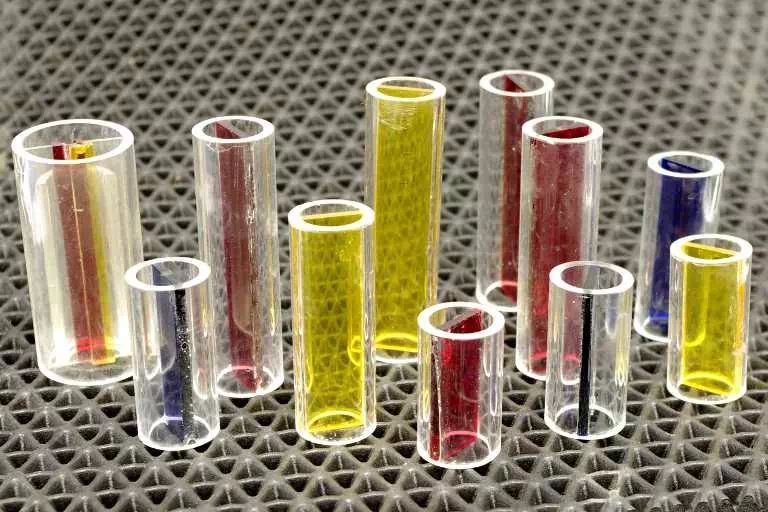 Glenn's home page.
Glenn's home page.
It is a brain, a genius. It has a mind that can draw information from every computer containing one of my [tarriel] cells. Orac has access to the sum total of all the knowledge of all the known worlds.
- Dr. Ensor, creator of Orac. Blakes 7, Series 1, Episode 13, "Orac"
For the TV Orac, the box contains a lot of transparent 25mm (and a few 40mm and 10mm) rods with coloured strips in them. Their purpose is never defined in the series, but I am calling them the local Tarriel Cells (as opposed to the countless billions of remote ones Orac can access). On the TV they were not internally lit. In my origional, I lit them with blinking LEDs. Still deciding if I will carry this lighting forward or not. To a certain degree, the decision comes down to whether I want to use an Arduino Uno or Mega: if I light the Tarriel Cells, I will need a Mega for the extra output lines. I have ordered the brightest LEDs I could get for each needed colour in 3mm format just in case - they are relatively cheap (I had to over-order due to a $10 minimum credit-card purchase requirement at my supplier).

Having extracted the tubes from the origional, I sanded their ends back, cutting back the ends that had old (low brightness) LEDs in them.
The colours were determined simply by what they had in the off-cuts bin at the shop when I was making the first version; not an intrinsic aversion to the colour green (though it is probably my least favorite colour).
I have decided to use an Arduino Mega (a lab one for now, but I will purchase my own at some point - otherwise I can't really call this model my own property) and as such have wired up the Tarriel cells with the ultra-bright LEDs and 470Ω current limiting resistors. I colour-coded the wires to (more-or-less) match the LED colours, mainly to have more different-coloured wires in the box, not out of any real need to differentiate them (these lamps will all pulse randomly anyway). All the LEDs share a common ground, for which I used white wire, mainly because it is a neutral colour of which I have a glut of medium-length offcuts.
First round I fixed two red cells that are of identical length to one end of the top of the box (having the box up-side-down). After an overnight to fix fully, I turned the box on its side and attached 2/3 of the remaining cells to what I am considering the front (I will simply be focusing more detail work on this face). Another overnight to fix, then turn the box to the other side and fix the rest of the cells. Also while fixing cells, I attached some other tech-looking found-objects in amongst them.
The code to drive the tarriel cells is fairly simple. I run a brief loop in setup to set all the appropriate outputs up (rather than set them up individually). Each time through the running loop I randomly set a random tarriel cell on or off. (I actually have some extra maths in the code to only use even-numbered pins, but stripped it out here for simplicity-of-example.)